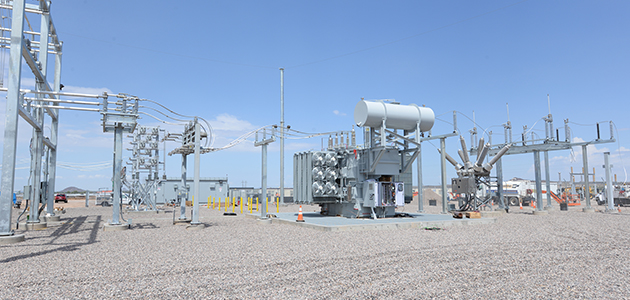Are You Looking After Your Renewable Substation?
Back to Top
A lot of effort is put into the operation of renewable power plants, whether it is a wind farm or a solar farm. Wind farms have programs in place for blade examinations, gearbox maintenance, lubricating system care, and much more. Solar farms have programs for vegetation management, panel washing, and inverter replacement.
Plant operators monitor most of those components in real time at a central operations center. Certainly, in a power-generation asset, any downtime of a generator translates directly to a loss of revenue. Much must be done to keep all the generators online as much as possible.
Unfortunately, one of the most critical components of the plant is often overlooked, and that is the interconnecting substation. We joke sometimes that plant operators see a sign that says “Danger–High Voltage” on a chain-link fence surrounding a substation and take that to mean “Don’t Enter–Ignore for 30 years.” That’s obviously an exaggeration, but in reality it is often not far from the truth in how these substations are treated.
A plant can contain the healthiest generation components, but if there is an issue in the substation, the plant can’t transmit the power, resulting in a total loss of generation revenue. This is a single point of failure for the plant. When a turbine or a feeder of solar panels is down, the rest of the plant is still able to transmit power. But if there is an issue with the main power transformer, the whole plant is offline–and often for a long time.
So, what can be done?
Plant operators can put a proactive maintenance and condition-based monitoring program in place for the substation to parallel what they are doing on the generator side of the plant. Operators should also perform some routine (annual) maintenance on circuit breakers and power equipment. It also should keep a spare-parts inventory for possible failure items. A monitoring program can proactively spot potential failures and possibly prevent them from happening.
What kind of things should plant operators be looking at? A comprehensive monitoring program can monitor breaker positions, temperatures, and the inverter alarms system health, and it can provide real-time dissolved gas analysis and power flow information. Some programs also can monitor station batteries and assist in NERC compliance. These systems can bring all of this data into to a central operations and monitoring center, where engineers can analyze and trend the information, spotting potential problems with this very critical equipment.
I would like to hear how you are looking after your substation in the comments below.